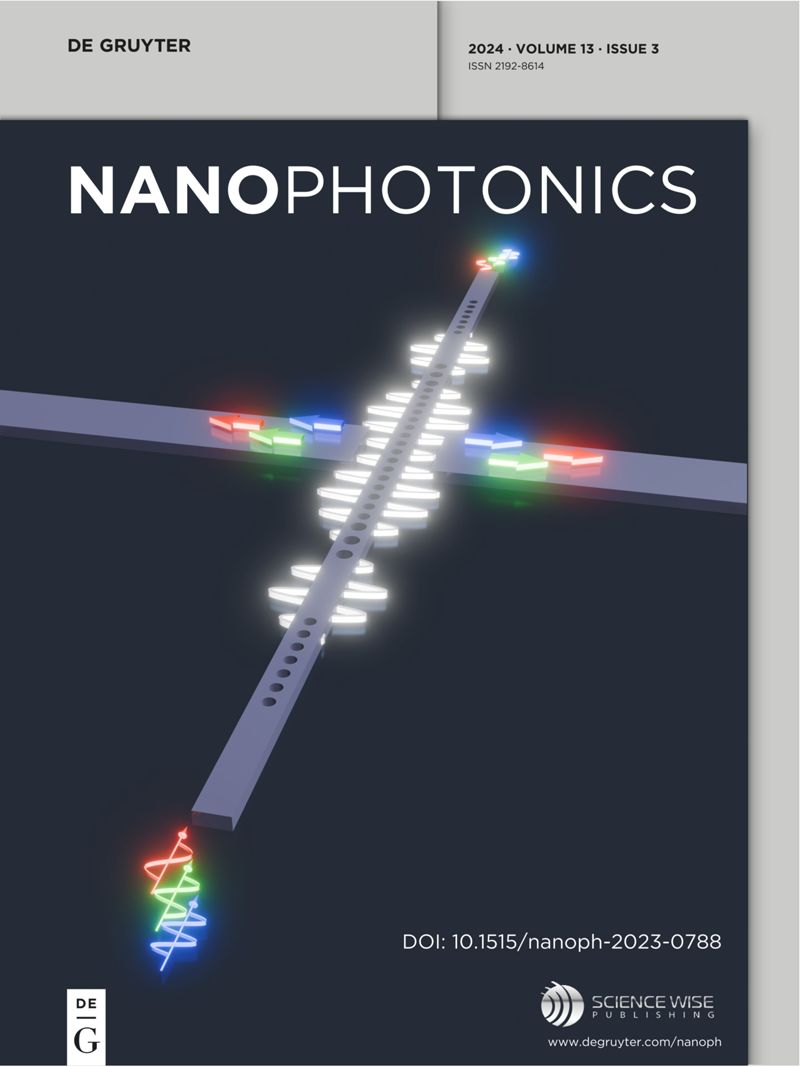IF 6.5
2区 物理与天体物理
Q1 MATERIALS SCIENCE, MULTIDISCIPLINARY
引用次数: 0
摘要
在过去的十年中,拓扑光子学领域逐渐崭露头角,在量子信息科学、激光和大规模集成光子学领域产生了重要影响。这些拓扑系统中的许多都呈现出受保护的状态,能够沿着其边缘进行稳健的旅行,而不会受到缺陷或无序的影响。然而,传统的拓扑结构往往缺乏灵活性,无法实现不同的拓扑模型和制造后的可调谐性。在这里,我们提出了一种在通用可编程硅光子干涉仪网格上实现支持拓扑保护边缘模式的类磁性哈密顿的方法。通过将晶格重新配置到具有精心调谐耦合的环形谐振器的二维网格上,我们展示了即使在存在制造公差缺陷的情况下也能实现稳健的边缘状态传输。我们通过展示不同尺寸和形状的拓扑绝缘体晶格来展示系统的可重构性,并引入边缘和体态缺陷来强调光子边缘态的稳健性。我们的研究为在通用可编程光子学平台上实现光子拓扑绝缘体铺平了道路。本文章由计算机程序翻译,如有差异,请以英文原文为准。
A programmable platform for photonic topological insulators
In the past decade, the field of topological photonics has gained prominence exhibiting consequential effects in quantum information science, lasing, and large-scale integrated photonics. Many of these topological systems exhibit protected states, enabling robust travel along their edges without being affected by defects or disorder. Nonetheless, conventional topological structures often lack the flexibility for implementing different topological models and for tunability postfabrication. Here, we present a method to implement magnetic-like Hamiltonians supporting topologically protected edge modes on a general-purpose programmable silicon photonic mesh of interferometers. By reconfiguring the lattice onto a two-dimensional mesh of ring resonators with carefully tuned couplings, we show robust edge state transport even in the presence of manufacturing tolerance defects. We showcase the system’s reconfigurability by demonstrating topological insulator lattices of different sizes and shapes and introduce edge and bulk defects to underscore the robustness of the photonic edge states. Our study paves the way for the implementation of photonic topological insulators on general-purpose programmable photonics platforms.
求助全文
通过发布文献求助,成功后即可免费获取论文全文。
去求助
来源期刊

Nanophotonics
NANOSCIENCE & NANOTECHNOLOGY-MATERIALS SCIENCE, MULTIDISCIPLINARY
CiteScore
13.50
自引率
6.70%
发文量
358
审稿时长
7 weeks
期刊介绍:
Nanophotonics, published in collaboration with Sciencewise, is a prestigious journal that showcases recent international research results, notable advancements in the field, and innovative applications. It is regarded as one of the leading publications in the realm of nanophotonics and encompasses a range of article types including research articles, selectively invited reviews, letters, and perspectives.
The journal specifically delves into the study of photon interaction with nano-structures, such as carbon nano-tubes, nano metal particles, nano crystals, semiconductor nano dots, photonic crystals, tissue, and DNA. It offers comprehensive coverage of the most up-to-date discoveries, making it an essential resource for physicists, engineers, and material scientists.
 求助内容:
求助内容: 应助结果提醒方式:
应助结果提醒方式:


